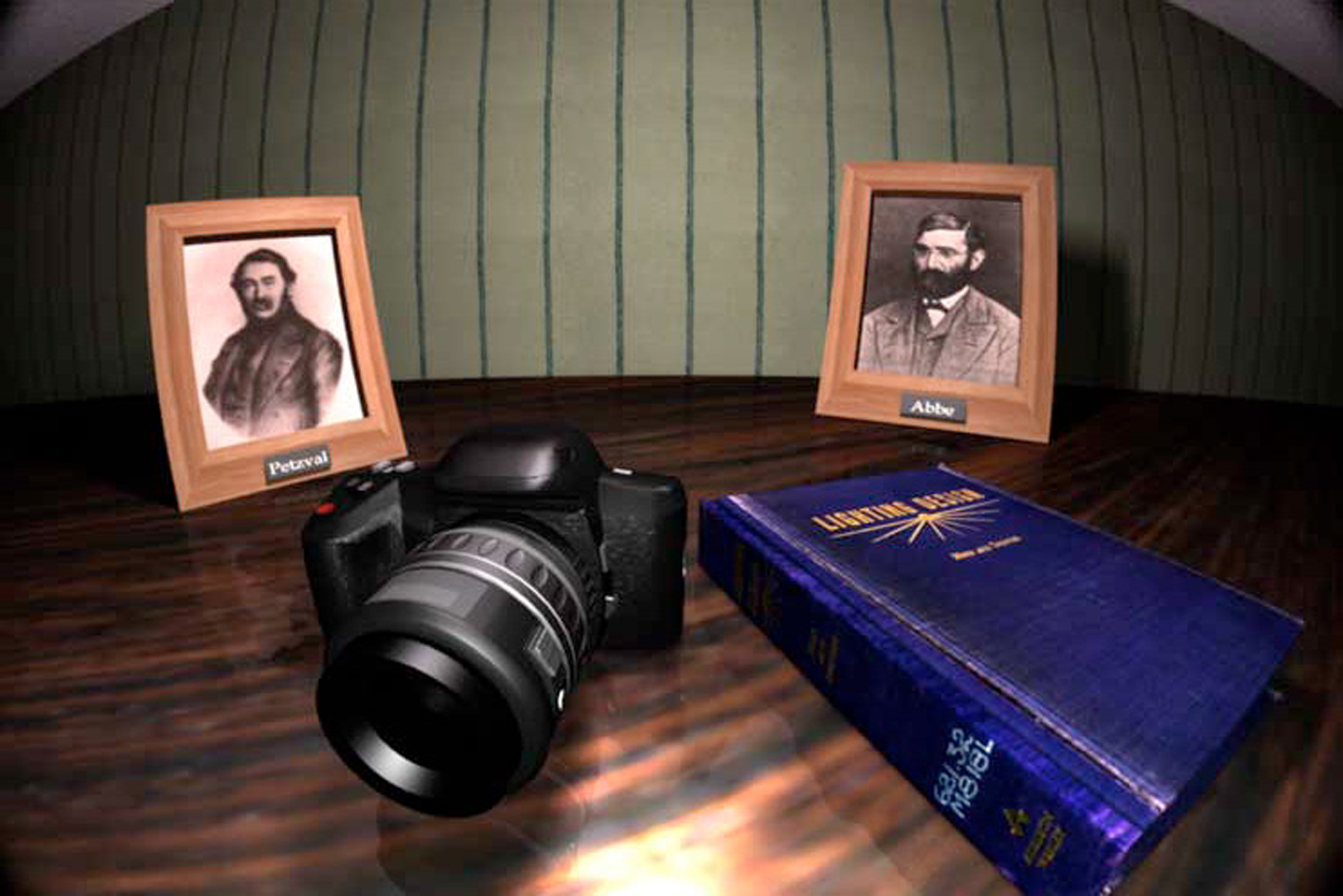“A realistic camera model for computer graphics” by Kolb, Mitchell and Hanrahan
Conference:
Type(s):
Title:
- A realistic camera model for computer graphics
Presenter(s)/Author(s):
Abstract:
Most recent rendering research has concentrated on two subproblems: modeling the reflection of light from materials, and calculating the direct and indirect illumination from light sources and other surfaces. Another key component of a rendering system is the camera model. Unfortunately, current camera models are not geometrically or radiometrically correct and thus are not sufficient for synthesizing images from physically-based rendering programs. In this paper we describe a physically-based camera model for computer graphics. More precisely, a physically-based camera model accurately computes the irradiance on the film given the incoming radiance from the scene. In our model a camera is described as a lens system and film backplane. The lens system consists of a sequence of simple lens elements, stops and apertures. The camera simulation module computes the irradiance on the backplane from the scene radiances using distributed ray tracing. This is accomplished by a detailed simulation of the geometry of ray paths through the lens system, and by sampling the lens system such that the radiometry is computed accurately and efficiently. Because even the most complicated lenses have a relatively small number of elements, the simulation only increases the total rendering time slightly.
References:
1. Max Born and Emil Wolf. Principles of Optics. MacMillan, New York, second edition, 1964.
2. Robert L. Cook, Thomas Porter, and Loren Carpenter. Distributed ray tracing. In Computer Graphics (SIGGRAPH ’84 P1vceedings), volume 18, pages 137-145, July 1984.
3. Status report of the graphics standards planning committee of the ACM/SIGGRAPH. Computer Graphics, 11:19+117, Fall 1977.
4. P. Foote. Scientific paper 263. Bulletin of the Bureau of Standards, 12, 1915.
5. Ned Greene and Paul S. Heckbert. Creating raster Omnimax images from multiple perspective views using the elliptical weighted average filter. IEEE Computer Graphics and Applications, 6(6):21-27, June 1986.
6. Rudolph Kingslake. Optics in Photography. SPIE Optical Engineering Press, Bellingham, Washington, 1992.
7. Nelson L. Max. Computer graphics distortion for IMAX and OMNIMAX projection. In Nicograph ’83 Proceedings, pages 137-159, December 1983.
8. Parry Moon and Domina Eberle Spencer. The Photic Field. The MIT Press, Cambridge, Massachusetts, 1981.
9. F. E. Nicodemus, J. C. Richmond, J. J. Hsia, I. W. Ginsberg, and T. Limperis. Geometric considerations and nomenclature for reflectance. Monograph 161, National Bureau of Standards (US), October 1977.
10. M. Potmesil and I. Chakravarty. A lens and aperture camera model for synthetic image generation. Computer Graphics (SIGGRAPH ’81 P1vceedings), 15(3):297-305, August 1981.
11. David F. Rogers and J. Alan Adams. Mathematical Elements for Computer Graphics. McGraw Hill, New York, second edition, 1990.
12. Mikio Shinya. Post-filter for depth of field simulation with ray distribution buffer. In P1vceedings of Graphics Intelface ’94, pages 59-66. Candian Human- Computer Communications Society, 1994.
13. Peter Shirley. Discrepancy as a quality measure for sample distributions. Emvgraphics ’91 P~vceedings, pages 183-193, June 1991.
14. Warren J. Smith. Modern Lens Design. McGraw Hill, New York, 1992.
15. W.T. Weltbrd. Aberrations of the Symmetrical Optical System. Academic Press, London, 1974.
16. Turner Whitted. An improved illumination model for shaded display. Communications of the ACM, 23(6):343-349, June 1980.
17. Charles S. Williams and Orville A. Becklund. Optics: A Short Course for Engineers and Scientists. Wiley-Interscience, New York, 1972.




